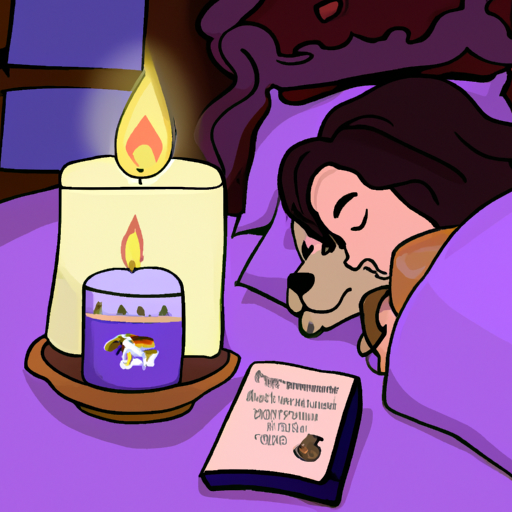As a caregiver, you are responsible for the wellbeing of your furry friend. And just like humans, dogs also need their fair share of beauty sleep. Here’s a comprehensive guide to help you ease your dog into a restful slumber.
1. Create a Consistent Sleep Schedule
Just like humans, dogs thrive on consistency. A regular sleep schedule can help your dog understand when it’s time to wind down and go to sleep.
-
Start by setting a consistent bedtime: Dogs typically need 12 to 14 hours of sleep a day, with puppies and older dogs requiring even more. Establish a bedtime that ensures your dog gets enough sleep and aligns with your schedule.
-
Consistency is key: Try to stick to the sleep schedule as much as possible, even on weekends or when your routine changes. This consistency helps your dog’s internal clock, making it easier for them to fall asleep at the right time.
2. Exercise Your Dog
A tired dog is a sleepy dog. Ensuring your dog gets adequate physical activity during the day can help them sleep better at night.
-
Morning exercise: Start the day off with a walk or play session. This not only helps wake your dog up but also starts the day off on an active note.
-
Evening exercise: Engage in a play session or walk in the evening to burn off any remaining energy. However, try to do this a couple of hours before bedtime to avoid overstimulating your dog.
3. Create a Comfortable Sleeping Environment
Creating a comfortable environment for your dog to sleep in can make a big difference in how well they sleep.
-
Provide a dedicated sleeping space: Just like you have your bed, your dog needs their space, too. A comfortable dog bed or a crate with soft bedding can provide a cozy sleep environment.
-
Consider the temperature: Dogs sleep best in a room that’s cool but not cold. Aim for a temperature between 60 and 70 degrees Fahrenheit.
-
Keep it quiet: Minimize noise as much as possible to help your dog sleep undisturbed.
4. Limit Food and Water Before Bed
Just like humans, dogs can have their sleep disturbed by a full bladder or an empty stomach.
-
Limit water intake: Try to remove your dog’s water bowl at least two hours before bedtime to reduce the likelihood of nighttime bathroom breaks.
-
Avoid feeding right before bed: Aim to feed your dog a few hours before their bedtime. This allows ample time for digestion and reduces the chance of overnight accidents.
5. Utilize Calming Techniques
If your dog struggles to fall asleep, there are several calming techniques you can try.
-
Calming massages: A gentle rub down can soothe a restless dog. Focus on areas like the shoulders, neck, chest, and the base of the tail.
-
Calming sounds: Some dogs respond well to calming sounds like white noise, soft music, or nature sounds.
-
Calming scents: Lavender is known for its calming properties and can help your dog sleep better. Consider using a lavender-scented dog bed or a diffuser with lavender essential oil.
FAQ
Q: How much sleep does my dog need?
A: Most adult dogs need about 12-14 hours of sleep a day.
Q: What if my dog still won’t sleep?
A: If your dog is still struggling with sleep, it may be a good idea to consult with your vet to rule out any potential health issues.
Q: Is it okay to let my dog sleep in my bed?
A: It’s a personal preference. However, it’s important to ensure it doesn’t disrupt your sleep or create a dependency issue for your dog.
Q: Can I use human sleep aids for my dog?
A: No, it’s not safe to give your dog human sleep aids. Always consult with your vet before giving your dog any kind of medication.
Q: Should I turn off the lights for my dog?
A: Yes, dogs sleep better in a dark environment. However, some dogs may feel more secure with a night light, especially if they’re in a new environment.
Whether your dog is a pup, an adult, or in its golden years, these tips should help you create a conducive sleeping environment and routine. Remember, every dog is unique, so it may take some trial and error to find what works best for your furry friend. Happy snoozing!



